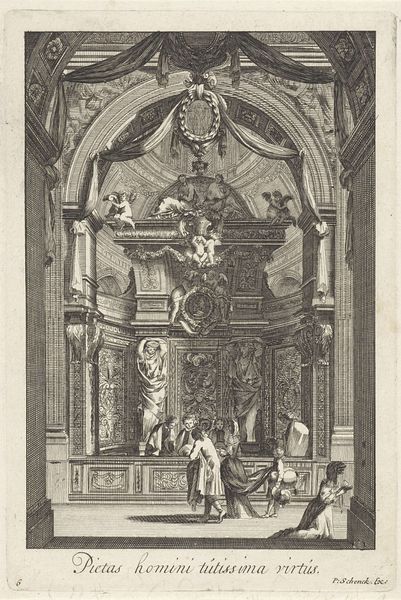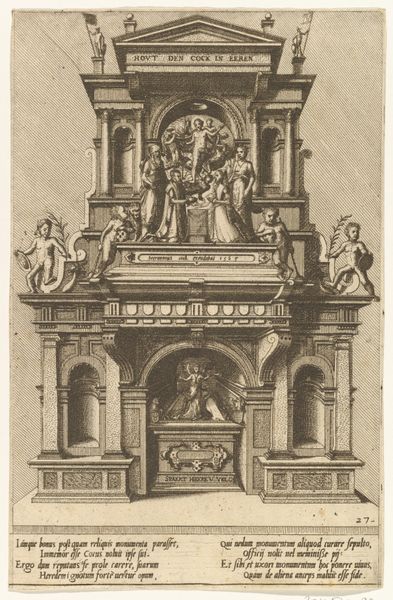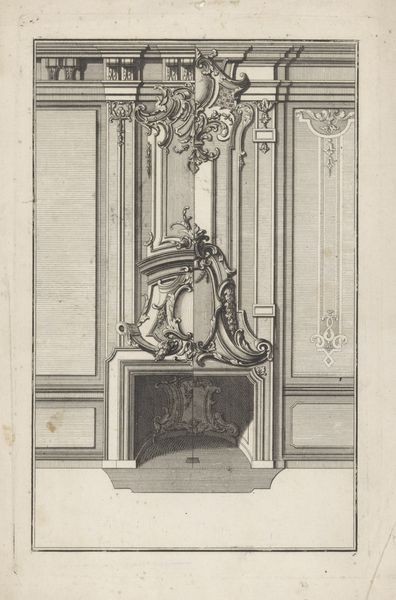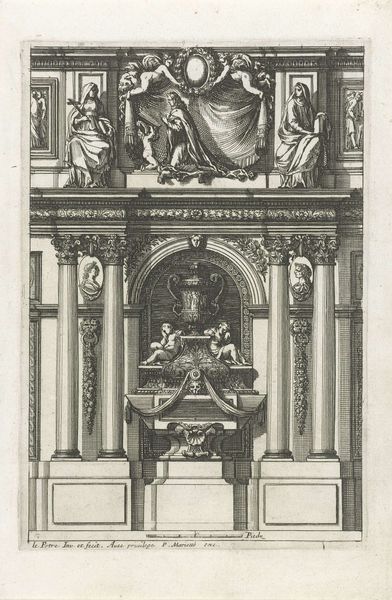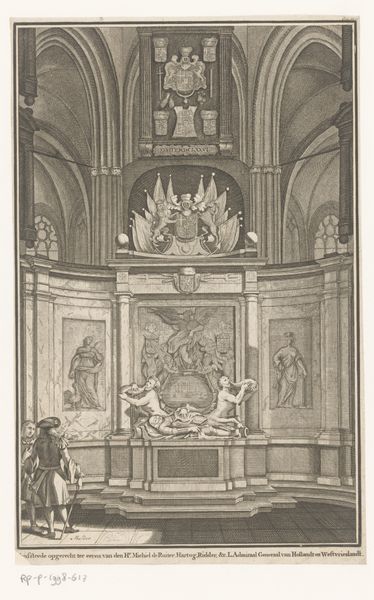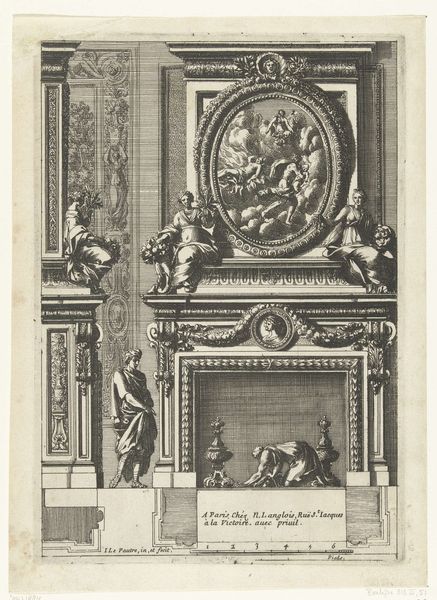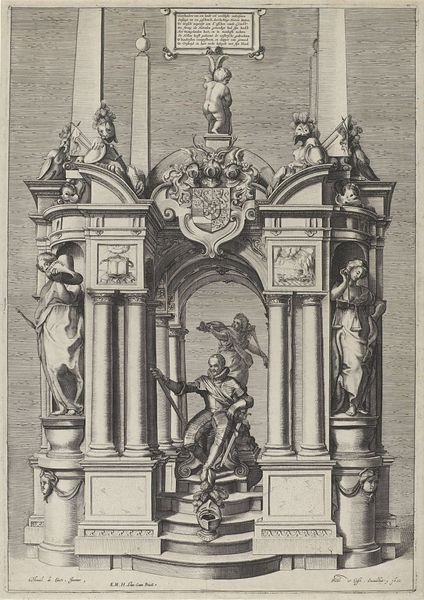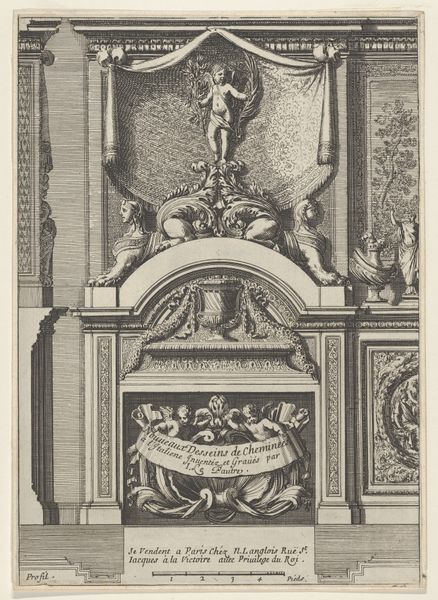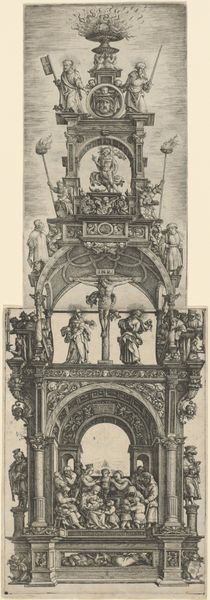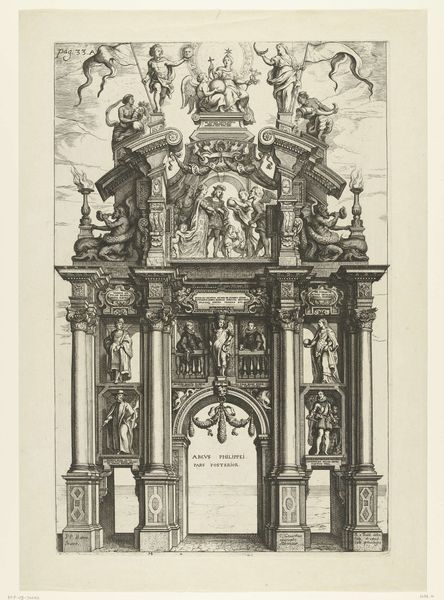
engraving, architecture
#
baroque
#
line
#
history-painting
#
engraving
#
architecture
Dimensions: height 291 mm, width 184 mm
Copyright: Rijks Museum: Open Domain
Editor: So, here we have Hieronymus Böllmann's engraving, "Epitaph with Putti in Niche," created between 1715 and 1726. It’s… intensely ornate. What historical factors might have driven this level of embellishment in memorial art? Curator: Well, let's think about the societal function of epitaphs in the Baroque period. This wasn't just private grief; it was a very public display. The aristocracy, the patrons of art, were keen to use imagery like this to publicly promote status and perpetuate dynastic legacy through elaborate, very visible funerary monuments. Notice the use of putti, they add a softer touch while referencing classical ideas, and the carefully etched lines indicate architectural precision and enduring materials. What kind of messages does this artwork project to viewers about power structures in the 18th Century? Editor: So it’s a performance of power and piety all rolled into one. Does the fact that it is an engraving change our perception, as opposed to, say, a sculpted epitaph? Curator: Absolutely. Engravings enabled a much wider circulation of imagery, making it a powerful tool for disseminating social ideals and demonstrating design styles across a larger network than just physical sculptures within the church or memorial settings. Think about how print culture affected political thought and artistic trends in this period. What values, or expectations, of 18th-century society is it broadcasting, whether intentionally or not? Editor: It’s creating almost a brand, both in style and statement. It presents itself as solid, reputable, powerful… fascinating how this relates to the printing press changing cultural expectations! Curator: Precisely. It helps us understand how Baroque values, as projected and idealized, permeated different strata of society through art and architectural publications. A look at these pieces offer clues to larger power relations. Editor: That's a brilliant way to look at it. Thanks for guiding me!
Comments
No comments
Be the first to comment and join the conversation on the ultimate creative platform.

